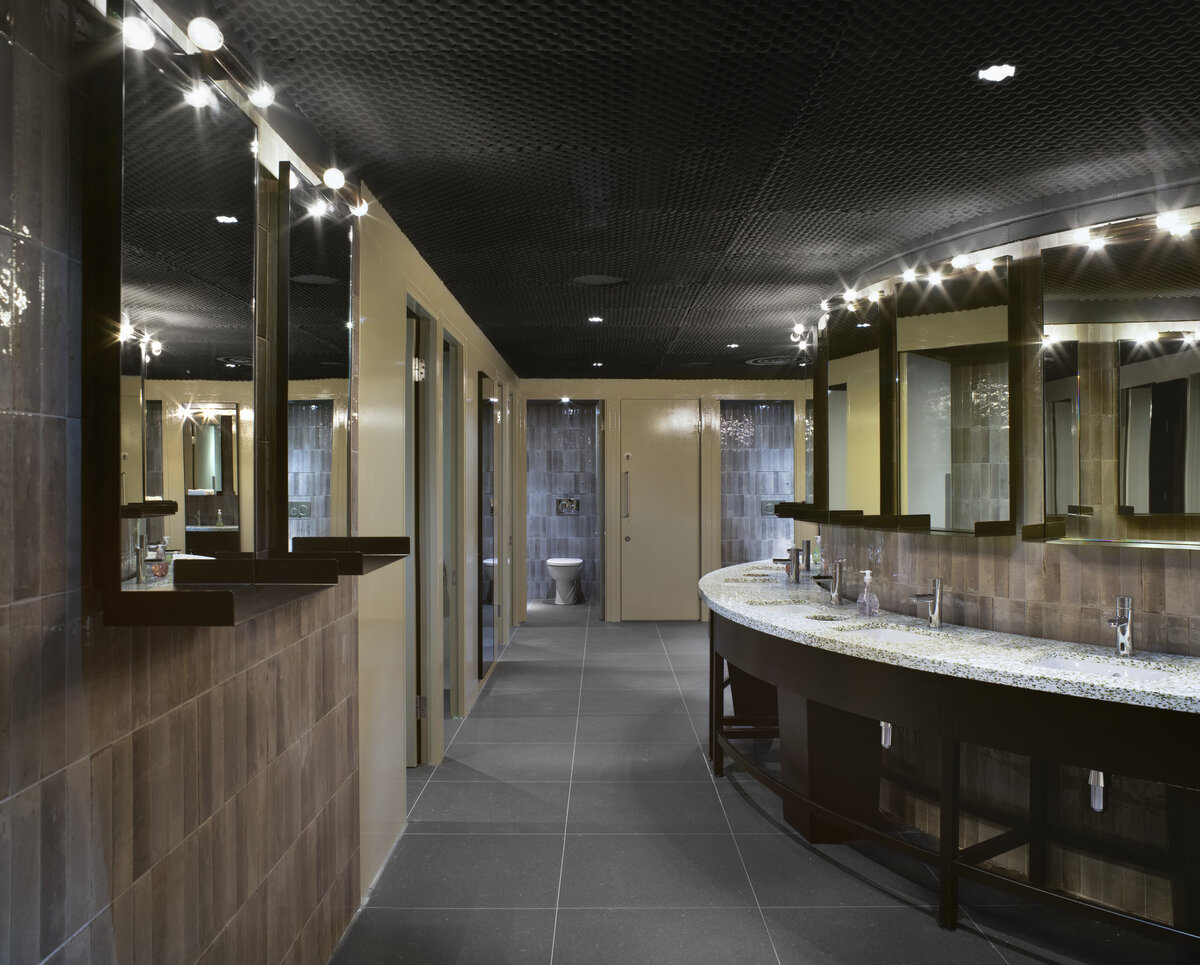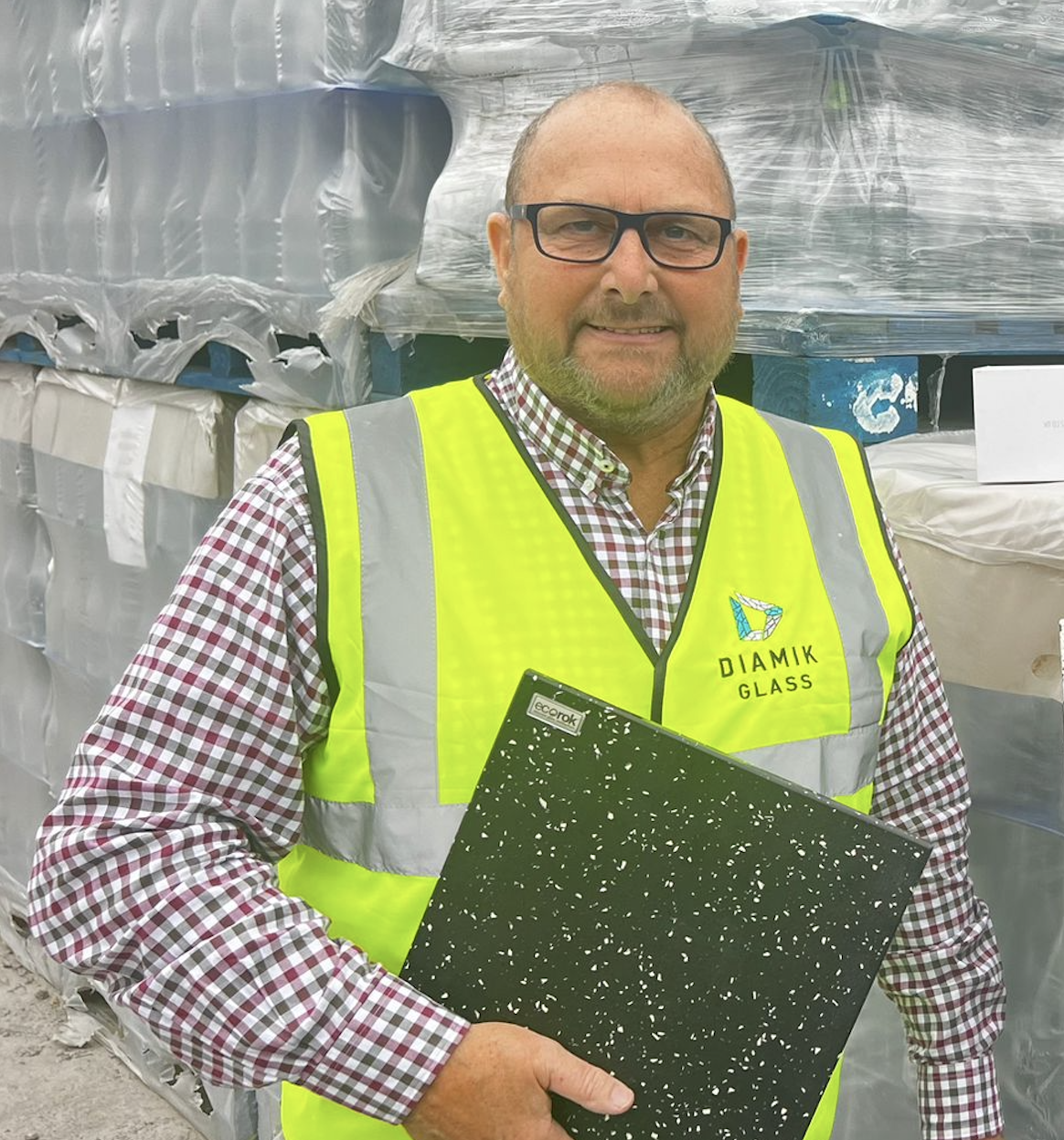
Building design that is inclusive of sustainable architecture and recycled materials is integral for businesses aiming to push forward and harness new technologies to meet their carbon neutral targets.
Sustainable architecture is a complicated, multi-layered discipline and businesses must consider materials and construction, as well as maintenance and afterlife. The green agenda should form the basis of business objectives going forward, and luckily, there are a few great options to provide inspiration and spearhead this changing approach to building design.
It’s time to start creating buildings that not only look good but also do good. Managing Director of the UK’s leading manufacturer of sustainable surfaces, Michael Pickup, shares his top tips.

Decor for good – recycled artwork and living walls
- Benefits of living walls
Living green walls purify air, reduce the ambient temperature and create a fantastic sense of well-being. This innovative way of bringing nature inside has been successfully adding value and beauty to interiors around the world since the 1970s and is testimony to excellent sustainable building design.
Living walls are part of climate-proof construction and significantly improve air quality. The wall filters convert CO₂ into oxygen and just 1m² of a living wall creates 1.7kg of oxygen.
- Mix it up with recycled art
Recycled art provides a new purpose for objects that have satisfied their original use. Using waste material otherwise destined for the skip in artwork conserves resources and reduces the amount of waste going to landfill.
decorok™ by Diamik Glass is manufactured using 100 percent recycled glass and is an example of how a material formerly discarded by waste, can be crafted into a thing of beauty. decorok™ can also be fully recycled at the end of its life to produce other items – another consideration when drafting sustainable building design plans.
In with the old: using past materials
- Reusing glass
Refurbishment projects must consider how they can reuse old materials to create something new. Pioneering projects paving the way in sustainable building design includes specialist project management company Ambit, which has been appointed as the partner firm to renovate the seven storey Waterman building on Farringdon Road in London.
Diamik Glass is teaming up with project leaders to remove 360 windows from the building which are no longer fit for purpose. Instead of being shipped to landfill, the glass will be crushed and bonded together using a specially formulated VOC free resin to create Diamik’s champion product, ecorok™.
ecorok™ is a hardwearing, luxury material and will be fitted across Level 4 of the 70,000 square foot building’s tea points and worktop spaces. By using old materials from the windows, Ambit and Diamik Glass are able to give another life to the glass that no longer met regulation for tall buildings in city centres.
Integrating sustainable tech
- Adopting green technology
Developers should also consider sourcing materials locally and implementing waste management strategies to minimise any waste. Meanwhile, designers and architects should collaborate closely to ensure that the building’s design optimises light and ventilation, reduces energy consumption, and allows for the integration of green technologies such as solar panels and eco-friendly HVAC systems.
Diamik Glass is a family business redefining sustainable solutions with projects across the country, providing partner organisations with a truly eco-friendly material that can be fitted across kitchens, bathrooms and reception desk points.
For more information please visit: www.diamik.co.uk
